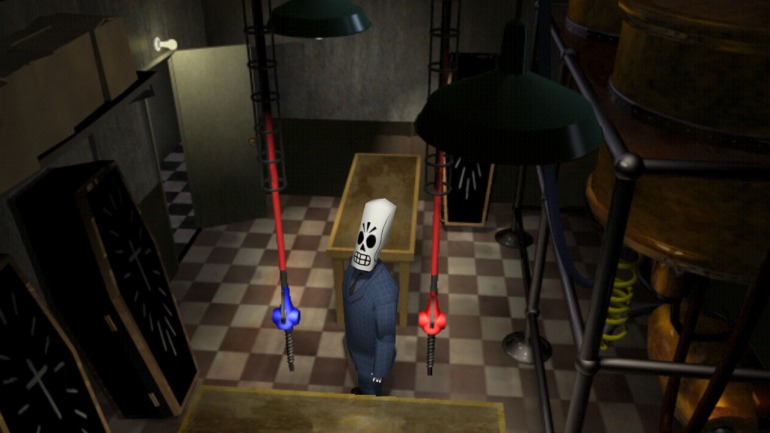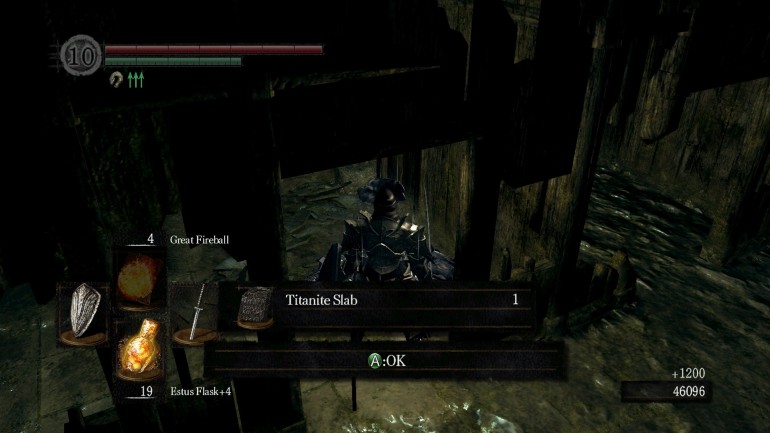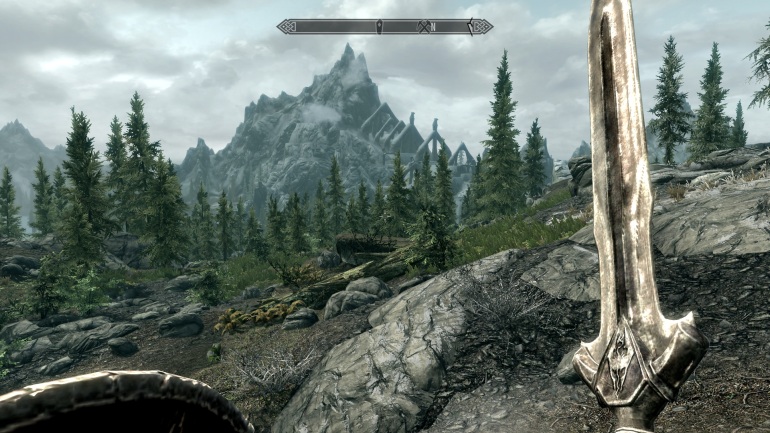A Casual Glance – Backtracking in Gaming
In A Casual Glance we’ll be having a look at various aspects of game design from the perspective of a casual observer (i.e. no hands-on experience in the games industry or professionally working on covering them, just as a player experiencing them) – this week we’ll be talking about how games implement backtracking with a few examples of how to best incorporate it and/or work around it.
For anyone that has been in gaming for any significant amount of time, the following scenario should be familiar: you have reached the end of an area (often a dungeon or military base or similar self-contained environment) and it is finally time to complete your objective – activate the self-destruct sequence, collect the Thing of Ultimate Power®, kill that pesky boss that’s been terrorizing the village… it doesn’t quite matter what the goal du jour is, just that you’re about to complete it. Once you do, a little popup appears – “Quest Updated: Return to town”.
And this is what backtracking usually boils down to.
Put simply, backtracking is what happens when a game asks the player to traverse previously-explored territory to return to its entrance point – often as soon as they have reached the other end. Trekking back to those quest-givers in World of Warcraft’s Barrens Crossroads to let them know you’ve killed 10 kobolds? That’s backtracking. Escaping the Ceres Space Colony after the self-destruct sequence is initiated in Super Metroid? Also backtracking. All that business with the shape memory alloy cards in Metal Gear Solid? Backtracking and more backtracking (and a very special example of what I call “Kojima Design”, but I digress).
It’s important to note that backtracking is a term (almost) exclusive to linear design (since open-world/non-linear content is by definition designed to allow for multiple options in traversing it) – so while the player might, for example, have to pass by the same settlement in Just Cause 2‘s Panau Island multiple times, the game flow is not specifically designed to force or encourage that and thus it would not be considered backtracking.

Backtracking is a useful design in a some cases: implemented correctly, it gives a sense of structure and verisimilitude (since it “makes sense” that, for example, buildings have the same opening act as both entrance and exit in most cases) while it also doubles down as a time-saver in regards to content (since it effectively doubles any given game real estate in size by having the player traverse it twice). Unfortunately, this is also where care must be taken, as any failure in masking its existence often leads to player fatigue and, in extreme cases, boredom.
I recently replayed Grim Fandango in its most recent, remastered iteration – it being one of my favorite games of its day, I had played it enough times in the past to remember all of the steps needed to solve the majority of puzzles in the game. This in turn led to a mostly linear experience – I was already familiar with what needed to be done to progress at any given point and thus could effectively avoid the illusion of open-ended design that first-time players would experience.
Unsurprisingly, when played as a linear experience, it quickly becomes apparent just how much Grim Fandango’s design relies on backtracking to increase the game’s run time. Before we proceed, I should clarify that I don’t consider backtracking to be inherently bad or even implemented solely as a padding mechanism – as stated, it’s a great way to keep up the illusion of a more believable game world and I’m sure the team behind Grim Fandango intended it as such, at least partially (adventure games of that era were notoriously short on actual content, so it’s easy to assume that padding was in part a developer goal).
That being said, Grim Fandango is a very good example of backtracking overload. Playing it with a clear idea of where I was headed and what I needed to do, I would still be forced to traverse the same scenes three or more times over the course of puzzles. An early example of this (spoilers, beware) can be seen in Year 2: Rubacava, where one of the main objectives is to gain the Sea Bee “Official” tools for Glottis, which in turn allows you to board the last ship out of town. This involves inciting the Sea Bees to riot, which in turn requires getting their leader out of jail, which ultimately involves a city-wide hunt for a missing photograph.

Sound straightforward? In theory, it is – distilled to its simplest, it’s a case of going from Point A to Point B to Point C, or rather, get clue 1 > get clue 2 > locate photograph > blackmail lawyer > get Sea Bee leader released > get tools from now-on-strike Sea Bees. The problem is that, due to how these objectives have been placed, a lot of back-and-forth is involved. In this example, you need to:
- Talk to Nick, the lawyer, until you can distract him and steal his cigar case. (VIP Lounge)
- Go to Carla and have the cigar case blown open to get the key to the lighthouse. (Security Checkpoint)
- Head to the Lighthouse and witness Lola’s death, get clue #1 – a tile. (Lighthouse)
- Head to Calavera Cafe and get the coat with the tile you found at the Lighthouse. (Calavera Cafe)
- Using the coat to gain clue #2 – a tattoo catalog design, head to the tattoo parlor (and solve a small puzzle) to check the specific design (Tattoo Parlor).
- Head to the Cat Tracks, solve a puzzle using clues obtained during the quest and produce a fake ticket stub, which can then be traded for an incriminating picture of Nick. (Cat Tracks)
- Head back to Nick, who agrees to help you free Terry, the Sea Bee leader, in return for the picture. (VIP Lounge)
Using the chart above, try following these steps and you’ll quickly notice that a lot of the time, due to how areas are linked, you’ll be traversing the same areas over and over and over again.
The problem is that, aside from becoming annoying busywork for older players, this also causes disorientation (in Grim Fandango’s case, also partially due to the badly-implemented combination of “tank” controls and fixed camera angles, although the remaster at least included a more traditional mouse control scheme) and in a few cases destroys any pacing the game had – after all, it doesn’t really feel like you’re racing against time when you are forced to go through the same crossroads five times in a row, right?
One of the ways this could’ve been fixed was dynamic actor placement, a fancy term for teleporting the protagonist closer to their objective once certain conditions are met (usually via cutscene or even just a plain fade to black). Amusingly, Grim Fandango already does this in certain places – the above example of a puzzle ends with game protagonist Manny Calavera and lawyer Nick being spawned outside the police station where Terry’s being kept, through a cutscene – which reinforces the belief that the rest of the backtrack-heavy sequences were indeed left in as a means of increasing gametime artificially.
So, how can a game “properly” implement backtracking, as I mentioned at the start of this post? Let’s have a look at some examples:
Dark Souls: Prepare to… unlock a shortcut?
The Souls series is a very good first example of how backtracking can be a positive inclusion if accounted for during initial design. From Software’s breakout meta-series has always relied on retreading old ground, whether it is a result of player deaths or general level layout. As far as I can see, this works for one simple reason: the level design takes the backtracking aspect into consideration on a very fundamental level.
Put simply, the levels are built from the ground up to allow for interesting traversal with multiple options even if the path itself is somewhat linear. In addition, the combat system itself accounts for this, offering a variety of options and encounters to keep things interesting over multiple runs through the same area. Finally, special care has been taken with shortcuts, special paths that can be unlocked once the player has progressed far enough into an area and which, once activated, provide an easy way to skip content that the player has already mastered (by virtue of managing to reach the shortcut in the first place).

The interesting thing here is that, as the level design and combat systems support the design choice to include backtracking, so does it in turn support the risk vs. reward mechanics – reaching one of the aforementioned shortcuts is designed to feel immensely rewarding, as they often provide immediate access to safe areas such as bonfires or vendor shops and act as a sort of impromptu checkpoint from where progress can be regained in the event of death.
But then, not all games are (or should be) built around the idea of dying all the time, so how would a more “traditional” experience handle backtracking? Enter… Skyrim.
Dungeons and Dragonborn
At the start of this post, I noted that backtracking is a design aspect that is mostly, if not exclusively, found in linear games, so how can Skyrim, one of the poster children for open-world design, possibly have any? Easily, as it turns out – while non-linearity forms the majority of Skyrim’s design, there is one exception: dungeons.
Dungeons in Skyrim (especially optional ones) are primarily linear affairs – one entrance/exit, a long trek from start to finish with some traps/monsters/treasure to interact with, an objective at the very end – and due to their level design, should require a large amount of backtracking to exit once fully cleared. Whether it’s a nefarious vampire lord hiding out in the deepest part of his lair, a Dragon Wall built at the very far end of a temple or a Dwemer ruin hidden at the bottom of a sprawling cave system, you should invariably be heading through it all in the opposite direction once you’ve completed them.
With a reported 340+ locations to discover and explore in Skyrim’s mountainous landscape, it seem like backtracking would become a big problem and yet it doesn’t – mostly because, once again, special care is taken to properly incorporate and even take advantage of it in level design.

In this case, the game’s developers have made sure to include a “return path” to the majority of the game’s non-story dungeons – in essence, an extra bit of the level which bridges the end-point to the entrance and, more importantly, is only accessible once the player has reached the end of the dungeon. A barely-hidden path behind a movable wall; a door that can only be unlocked from the endpoint of the dungeon; a jump-off point which deposits you in the lake at the base base of a waterfall once you’re done climbing – no matter how, there’s almost always a way to quickly return to the entrance of a dungeon (and by proxy, the overworld and the rest of your sandbox adventures).
As with the Dark Souls example, Skyrim’s solution to backtracking allows it to extend the experience but counteracts the inherent annoyance and eliminates the tedium associated with it, as these return paths are previously-unexplored content that might also contain rewards of their own, as well as feeling a lot more natural than a forced teleport cutscene. An elegant solution overall, though in this case it comes at the cost of diminishing the verisimilitude of the world – after all, after finding the 20th or so return path you’re starting to wonder just how uncannily lucky the Dragonborn seems to be, if they’re discovering so many shortcuts everywhere they explore.
Even so, I find this to be an acceptable sacrifice – perhaps a more elegant solution can be reached in a more linear or less content-heavy game, but at least this method is a good starting point and an excellent example for future games.
Have you ever played any games that require excessive backtracking? Got any examples of your favorite games handling it in an interesting way? Share below in the comments!

